Thanks to James Ziskin for putting together this post about his crime novels, set in the early 1960s, and how that time period impacts what he does. He’ll be here Monday, February 5th, at 7pm with Terry Shames and Laura Oles to discuss his book, Cast the First Stone.
I write the Ellie Stone mysteries, a series of traditional-cum-noir crime novels set in the early 1960s. Ellie is a mid-twenties reporter for an upstate New York daily. A self-described “modern girl,” she works twice as hard as any man at the paper, gets half the credit, and all the wolfish leers.
My books are sometimes categorized as historical. The time period is near past, which presents both advantages and challenges when it comes to creating a believable fictional world. The sixties were not so long ago, and the world isn’t all that different, at least not when compared to a hundred or two hundred years earlier. But the things that have changed have done so in sometimes drastic, sometimes subtle ways. Before considering names, let’s look at a few of the obvious differences.
Cars. On the left is Ellie’s 1955 Dodge Royal Lancer and, on the right, its descendant, the 2018 Dodge Lancer.

Well, they both have four tires, and they’re both red. Of course, two-toned paint jobs and chrome were all the rage in the fifties. But under the hood and inside the brains of the cars, they might as well be a biplane and a jumbo jet for all they have in common. By the way, Ellie’s car—same colors even—was featured in a Dodge commercial just a couple of years ago. Have a look. https://m.youtube.com/watch?v=1JeNv0FoPXo
Telephones. The old black rotary phones have gone the way of the dinosaur. Today’s phones are powerful computers, great for doing research or enjoying entertainment.

Fashion. Ellie might have dressed something like this. Today, these ladies look like a mashup of air hostesses, Don Draper’s secretaries, and the Stepford PTA.

And what would Ellie have been listening to on the AM radio in her car? Brenda Lee’s “I’m Sorry” topped the charts for three weeks in the summer of 1960. Tastes change. If you don’t think so, listen to this song.

Sports. Heisman trophy winners Joe Bellino, 1960, and Baker Mayfield, 2017.

And then there’s this…

But wait a minute. Wasn’t this supposed to be about names?
I was just getting to that.
Take girls’ and boys’ names. There weren’t many Justins, Aidans, or Graysons running around in Ellie Stone’s 1960. You were more likely to find Davids, Michaels, and Jameses. Hmm. What do you know? James. And I was born in 1960… For girls, names were pretty tame back then. Mary, Susan, and Linda were the top three in America. And when Ellie was born in 1937, the most popular were Mary, Barbara, and Patricia. Not one of those three names cracks the top hundred in 2017. And that’s on a list that includes “Luna” at number forty-eight! Last year, neoclassical and old-time names Sophia, Olivia, and Emma topped the list. And, surprise of surprises, neither Sophia nor Olivia made the top hundred in 1937. Emma barely squeezed in under the wire at number eighty-nine.
For Cast the First Stone, I dropped Ellie into 1962 Hollywood. She’s sent to California by her editor to interview a local boy who’s landed the second male lead in a beach picture. First, to avoid lawsuits and hate mail, I decided to avoid using real Hollywood stars in my book—at least none who appear as characters. Of course people mention the odd actor or actress in the course of the story, but no actual celebrities appear in the book. Well, one does, but just for one line, and I’m not telling who it is. (Here’s a useful, hint, though. Dead people cant sue for defamation.) Second, to achieve maximum believability, I wanted to avoid inventing fictional megastars. It’s difficult—but not impossible—to win the reader’s buy-in. Cal Granite, Bart Steele, or Dirk Bogarde just aren’t believable as names. Well, okay, Dirk Bogarde was a real actor, but I almost had you, didn’t I?
So how to create believable names for the period? I lowered my sights. Instead of A-listers, I populated Cast the First Stone with end-of the-dugout directors, no-name producers, and C-list actors. The same is true for the title of the fictional film at stake in the book, Twistin’ on the Beach. It’s 1962, people were doing the twist again (like we did last summer), and teenage beach pictures were just entering their golden age. If there weren’t at least two or three films with that name that year, there should have been.
Now I needed actors for my film. No big names, remember. So I came up with boy-next-door types appropriate for the era. And white-bread white last names. Tony Eberle, Bobby Renfro, Bo Hanson. The female lead in the movie is Carol Haven, though she never makes an appearance in the book.
There’s also the question of using real places whenever possible, and fictional ones where convenient. From the outset of this series, I chose to fictionalize the town where Ellie lives and works. New Holland, New York, cannot be found on any map except the one in my upcoming A Stone’s Throw (June 5, 2018). Making up a small city is no big deal, and it frees me from researching every last detail about a real place. But once Ellie lands in Los Angeles in Cast the First Stone, real locations are necessary to create the impression of that great city. I chose to use the actual Paramount Studios as the site where Twistin’ on the Beach was being filmed. The instant name recognition helps create realism. Everyone’s heard of Paramount, so I didn’t have to labor unnecessarily to convince readers. The Godfather took a different route, probably to avoid potential lawsuits, using a fictionalized studio—Woltz International Pictures—for the famous horse-head-in-the-bed sequence. (Oh, come on. It’s not a spoiler after forty-five years.) As great as that film is, the name of the studio strikes me as less than compelling. We know it’s not real, and no magic is conjured by seeing its name or its unimpressive gate.
I used the same tactic in my upcoming A Stone’s Throw (June 5, 2018). Where possible, I used real names—e.g. Saratoga Race Course—but brought the characters down to a manageable level of fame. Thoroughbreds, jockeys, owners, and gamblers are all fictional, except for a few real horses, mentioned here and there, and Willie Shoemaker making a cameo appearance. Those recognizable names make the time period feel more authentic to the reader. The fictional characters do their job, too, entertaining us with their exploits, while never breaking the spell with their unfamiliar “household names.”


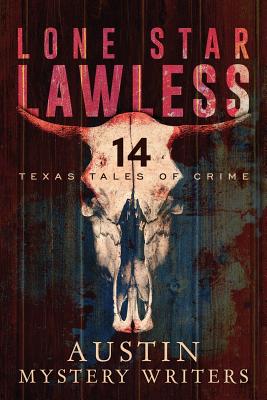 The Lone Star Lawless project was headed by the exuberant Austin Mystery Writers member Gale Albright. Albright describes the anthology perfectly in her introduction, writing, “The stories in this volume cover motel hell, medical menace, mortuary mayhem, sharp knives, kidnapping, theft, murder, assault by food, dangerous exercise, fickle fingers, and bad attitudes.” Not to mention a retelling of the fairy tale Little Red Riding Hood, full of crime and a Texas twist. Now who could pass up that?
The Lone Star Lawless project was headed by the exuberant Austin Mystery Writers member Gale Albright. Albright describes the anthology perfectly in her introduction, writing, “The stories in this volume cover motel hell, medical menace, mortuary mayhem, sharp knives, kidnapping, theft, murder, assault by food, dangerous exercise, fickle fingers, and bad attitudes.” Not to mention a retelling of the fairy tale Little Red Riding Hood, full of crime and a Texas twist. Now who could pass up that? 
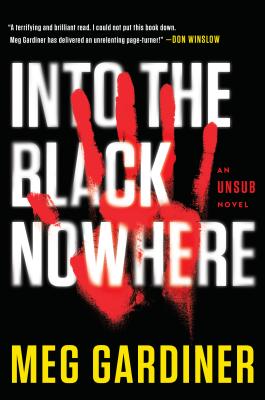 MG: I love it. Every time I finish writing a novel, I hate saying goodbye the the characters. When I can come back to one—like Caitlin—it feels like meeting up with a close friend. And it’s exciting to continue exploring Caitlin’s mission and her world. She’s young, driven, dedicated, and still has a lot to learn. I want to take her on that trip.
MG: I love it. Every time I finish writing a novel, I hate saying goodbye the the characters. When I can come back to one—like Caitlin—it feels like meeting up with a close friend. And it’s exciting to continue exploring Caitlin’s mission and her world. She’s young, driven, dedicated, and still has a lot to learn. I want to take her on that trip.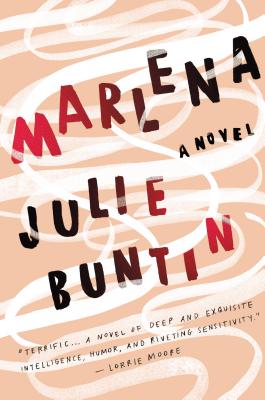 The novel revolves around a woman named Cat, who now lives and works in New York City, but once lived in a podunk town in Michigan where she was forced to struggle to get along with a dysfunctional mother and a less than satisfactory life. Eventually—well, almost immediately—Cat meets Marlena, and a beautiful but terrifying friendship begins. It is known from the beginning that Marlena will die. It is known from the beginning that her death will be tragic, and that it will haunt Cat for the rest of her life. It is known from the beginning that this is not a happy story, and perhaps these are the reasons I consider it a genuinely real crime novel: the fact that this book is filled with the inevitable darkness that envelops us all, the ways our mistakes come back to haunt us, and of course, you know, there’s crime in the novel. So, there’s that.
The novel revolves around a woman named Cat, who now lives and works in New York City, but once lived in a podunk town in Michigan where she was forced to struggle to get along with a dysfunctional mother and a less than satisfactory life. Eventually—well, almost immediately—Cat meets Marlena, and a beautiful but terrifying friendship begins. It is known from the beginning that Marlena will die. It is known from the beginning that her death will be tragic, and that it will haunt Cat for the rest of her life. It is known from the beginning that this is not a happy story, and perhaps these are the reasons I consider it a genuinely real crime novel: the fact that this book is filled with the inevitable darkness that envelops us all, the ways our mistakes come back to haunt us, and of course, you know, there’s crime in the novel. So, there’s that. How many stories have we read about young women and their friendships gone wrong? Megan Abbott has a novel coming out this year (and Abbott has praised Marlena, if that’s not a reason to purchase it alone) about a friendship turned upside down by a crime. There are, of course, numerous—maybe innumerable—other novels, including other books coming out this year. But Marlena stands out to me in a way similar, but different, than Abbott’s Give Me Your Hand. It is a divine examination of a friendship gone wrong, a love lost—not necessarily a romantic love, not necessarily I say again, but something more profound. An instant in one’s life that has changed this woman forever, and that she can never get back, and never be unchanged by.
How many stories have we read about young women and their friendships gone wrong? Megan Abbott has a novel coming out this year (and Abbott has praised Marlena, if that’s not a reason to purchase it alone) about a friendship turned upside down by a crime. There are, of course, numerous—maybe innumerable—other novels, including other books coming out this year. But Marlena stands out to me in a way similar, but different, than Abbott’s Give Me Your Hand. It is a divine examination of a friendship gone wrong, a love lost—not necessarily a romantic love, not necessarily I say again, but something more profound. An instant in one’s life that has changed this woman forever, and that she can never get back, and never be unchanged by. I last interviewed Crais
I last interviewed Crais 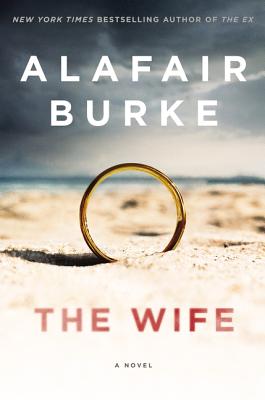 There comes a time in every prolific author’s career when one has to ask “Is there any way for this author to get better? To improve upon their most recent work? To actually write something better than this?” For some writers, they go downhill after their peak—other authors only rise, never reaching that peak exactly (see wonderful examples like Laura Lippman, Alison Gaylin, Alex Marwood, and Megan Abbott). The question now is: has Alafair Burke reached her peak? I sincerely doubt it—a writer of her talent can most likely reach unimaginable heights—yet it is incredibly hard to fathom Burke improving upon her most recent masterpiece,
There comes a time in every prolific author’s career when one has to ask “Is there any way for this author to get better? To improve upon their most recent work? To actually write something better than this?” For some writers, they go downhill after their peak—other authors only rise, never reaching that peak exactly (see wonderful examples like Laura Lippman, Alison Gaylin, Alex Marwood, and Megan Abbott). The question now is: has Alafair Burke reached her peak? I sincerely doubt it—a writer of her talent can most likely reach unimaginable heights—yet it is incredibly hard to fathom Burke improving upon her most recent masterpiece,  From the very beginning of the novel, I was roped in. The reader is startled by the way Burke can transform the most mundane scenes into something extraordinary, ripping out incredible portions of her character’s psyches in ways you would never expect. I was floored again and again as revelation after revelation was revealed, chapter after chapter. The book is such a quick read that, when finished, I felt compelled to start it over immediately, unsure if I had finished the novel or just begun.
From the very beginning of the novel, I was roped in. The reader is startled by the way Burke can transform the most mundane scenes into something extraordinary, ripping out incredible portions of her character’s psyches in ways you would never expect. I was floored again and again as revelation after revelation was revealed, chapter after chapter. The book is such a quick read that, when finished, I felt compelled to start it over immediately, unsure if I had finished the novel or just begun. MysteryPeople Scott: Was there anything in particular that drew you back to Dominic?
MysteryPeople Scott: Was there anything in particular that drew you back to Dominic? MP: Actually, yes. You’re right in that I’ve not done this much before but as I thought about how to tell this story, I knew it was necessary. Put simply, if anyone who read Hollow Man read another book entirely from Dominic’s perspective, they wouldn’t believe a word he was saying. They’d be crazy to! So, I knew I had to corroborate events through other, more reliable, characters. It turned out to be fun, especially overlapping Dominic with the sycophantic Brian, getting two very different takes on one interaction.
MP: Actually, yes. You’re right in that I’ve not done this much before but as I thought about how to tell this story, I knew it was necessary. Put simply, if anyone who read Hollow Man read another book entirely from Dominic’s perspective, they wouldn’t believe a word he was saying. They’d be crazy to! So, I knew I had to corroborate events through other, more reliable, characters. It turned out to be fun, especially overlapping Dominic with the sycophantic Brian, getting two very different takes on one interaction.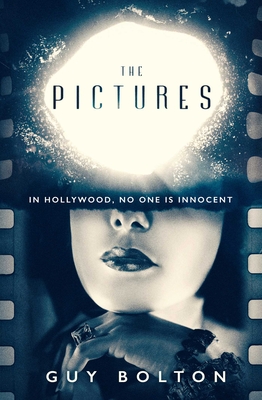 MysteryPeople Scott: How did The Wizard Of Oz get to be the movie that served as backdrop for the story?
MysteryPeople Scott: How did The Wizard Of Oz get to be the movie that served as backdrop for the story? MysteryPeople Scott: You spin several plates with this mystery, was there anything in particular you wanted to explore?
MysteryPeople Scott: You spin several plates with this mystery, was there anything in particular you wanted to explore? 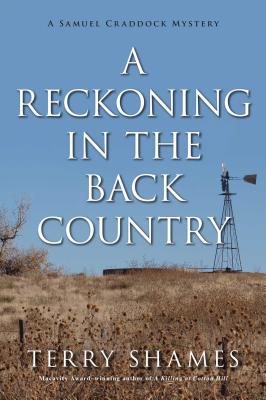 MPS: Since Back Country deals with dog fighting, you risk that unwritten rule of alienating a reader by harming an animal. Did you have any trepidation?
MPS: Since Back Country deals with dog fighting, you risk that unwritten rule of alienating a reader by harming an animal. Did you have any trepidation? 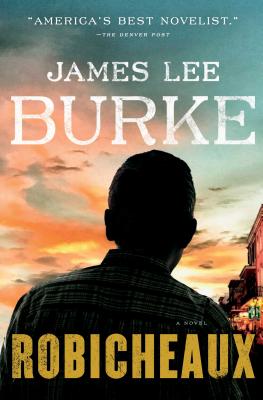 James Lee Burke remains a master of his game, one of the best writers out there. Some of the deserved praise – including getting the Grand Master Award from the Mystery Writers of America – is for his writing style, some for how he digs deep with plots and fleshes out his unique characters.
James Lee Burke remains a master of his game, one of the best writers out there. Some of the deserved praise – including getting the Grand Master Award from the Mystery Writers of America – is for his writing style, some for how he digs deep with plots and fleshes out his unique characters. The book has this author’s note:
The book has this author’s note: